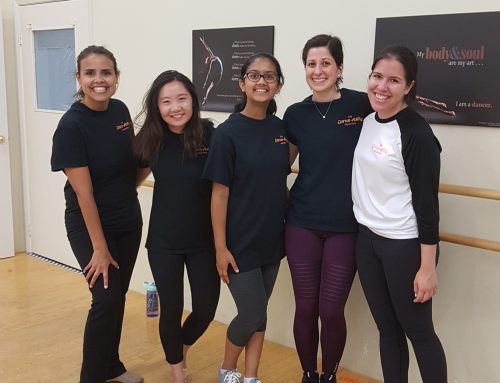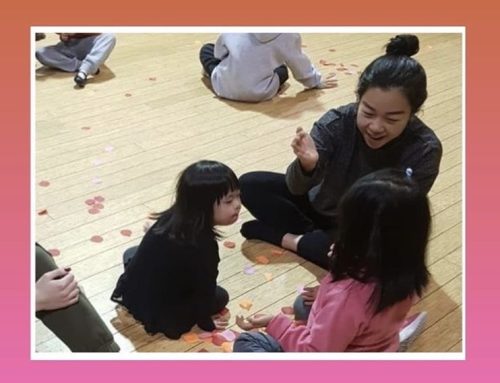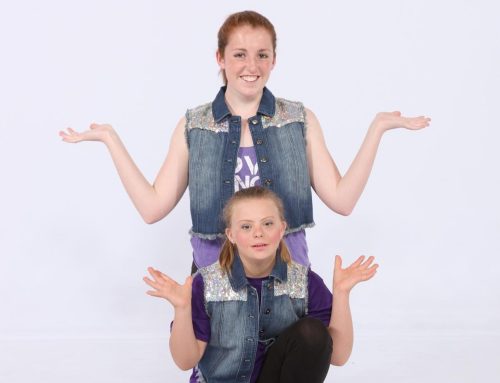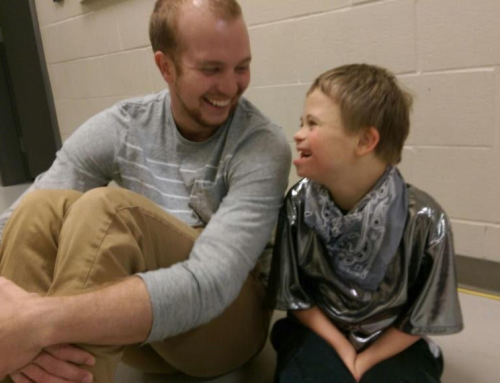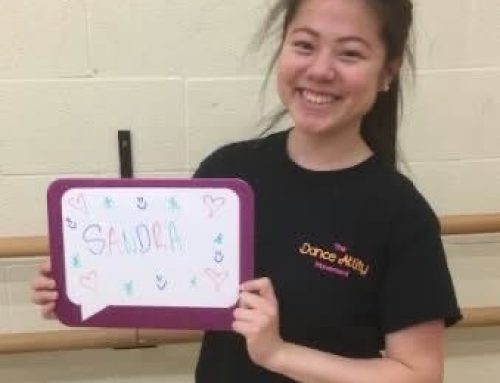We have invited Raven Brooks, student Occupational Therapist at the University of Toronto, to share some reflections about the dynamic roles the Dance Ability Movement OTs have based on her experience during her 10-week placement with us. Since Raven’s impressions covered diverse topics, we’ve decided to publish them in a series of blog posts.
In her first blog post, Raven explained how our OTs support new dancers through an individualized approach to help with their transition into the DAM community and encourage participation. This week, she will talk about the OT role in supporting classes using a Universal Design, and targeted team approach! To learn more about our OT tiered model of service delivery, view the graphic below.
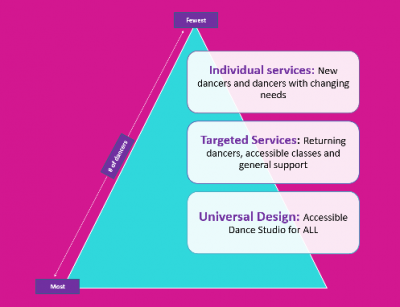 Universal design and a targeted team approach are used to provide accessible and inclusive dance classes, while also facilitating belonging for individuals with different needs. I have experienced so much joy being involved in dance classes during my placement. The dancers have so much energy, are so welcoming, and their smiles while they dance are contagious! Supporting dance classes and returning dancers within that class is also an important OT role. When working with returning dancers and their families, the OT role is more focused on general support of the classes and dancers and is not as individualized of an OT role as it is with new dancers. With returning dancers, OTs use a more universal design approach to support the class as a whole.
Universal design and a targeted team approach are used to provide accessible and inclusive dance classes, while also facilitating belonging for individuals with different needs. I have experienced so much joy being involved in dance classes during my placement. The dancers have so much energy, are so welcoming, and their smiles while they dance are contagious! Supporting dance classes and returning dancers within that class is also an important OT role. When working with returning dancers and their families, the OT role is more focused on general support of the classes and dancers and is not as individualized of an OT role as it is with new dancers. With returning dancers, OTs use a more universal design approach to support the class as a whole.
Here is a look at how OTs support returning dancers in their classes and some things that I did:
- The OT role looks different for returning dancers; the OT helps to create or continue to support these participation teams (Anaby et al., 2021). The OT ensures everyone on the participation team is working toward the shared goals for their group, in addition to considering new dancer’s individualized goals.
- In a class where there are many returning dancers, the OT needs to balance quite a few things. This may include the dynamic of a new group forming where there are both new and returning dancers, instructors, volunteers and families all coming together with different experiences and expectations of what a dance class should look like for each of them. The dynamic of a new group forming has shifted while being online with interaction amongst group members before, during or after classes being more limited. To balance all of these factors in each class, the DAM OTs focus on coaching, educating, and consulting with the participation team to design an environment that helps facilitate everyone’s meaningful participation. Each participation team member has specific strategies or things to implement to ultimately support the participation of the dancers in that group. I verbally cued many dancers during class to assist with re-engagement and increase their participation, modeling this for the team while coaching and educating volunteers on how they can re-engage dancers as well.
- OTs observe students and help to build that next level of challenge by providing opportunities for a dance move to be graded (i.e., made more challenging). Our instructors and OTs want to ensure that meaningful participation exists for each dancer whether they are new to the DAM or have been dancing for years. With the OTs providing recommendations for that next level of challenge, this helps continue to build a dancer’s skills and confidence. By providing those challenges, this also increases others’ expectations of what dancers can accomplish. I provided specific feedback to the dancers because working hard absolutely deserves recognition and the instructor may not always be able to closely observe all of the dancer’s efforts while they’re teaching far away from their screen.
- For one specific group, dancers had a 5 minute break in between two shorter classes. There was a new parent who suggested the idea of using Kahoot games to help their dancer feel comfortable with virtual interactions. I facilitated games for this group, based on the interests of the dancers during their breaks between classes which also promoted social engagement with each other. With the COVID-19 restrictions that have been in place, the OTs at the DAM have recognized that opportunities for peer connection are more important than ever for mental health. This was also a way to help develop a sense of belonging to a new group as many of the dancers and volunteers had not danced together before.
- I sought feedback from dancers and families regarding the dance classes and facilitated debriefs with volunteers and instructors after classes so that I could incorporate that feedback for the following weeks to make everyone’s experience even better.
- Given the limited time for interactions before, during and after classes in the virtual platform facilitating social events with Sabrina, the other Student OT, has been a huge part of our placement. Giving dancers a platform to connect with others and have some fun, positively influences each dancer’s participation in dance and gives them something to look forward to each week. The DAM implemented changes based on the feedback from families and volunteers regarding the need for more connection with others and more virtual social opportunities, to ensure time in their weekly schedule during the 6-Week Dance Club for this much needed opportunity for dancers to connect with others. The goal of the socials was also to contribute to supporting positive mental health as dancers and volunteers navigate this challenging pandemic and provide them with the time and space to check-in and have some fun.
Raven Brooks

